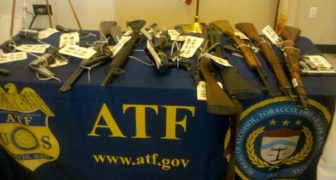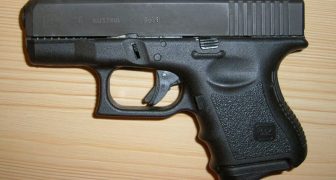This is a guest post by Scott Sylvester
The ability to respond to threats quickly and effectively is based on pattern recognition or schemas. A schema is a “scenario,” or a pattern of events your brain recognizes based on training, experience or pre-programmed mental rehearsals. Having a host of these developed patterns or schemas gives you a thick file folder to draw from. The more experience, training, or mental role-playing you do, the more patterns you will be able to recognize.
Have a lot of schemas stored in your brain is important because your mind and body recognize these patterns and develop sub routines or responses based on how much experience, training or mental rehearsals you have developed. If your brain is a large file cabinet, you have a drawer in the cabinet that stores information about threats to your safety. In that drawer there are dozens of folders each containing specific information about a threat event and the instructions, or rather the exact sequences of neurons that need to fire and the chemicals and hormones necessary to create an effective response to the threat stimulus.
What is intriguing is that a lot of these schema or folders cross reference each other. A human body articulates in certain ways and even when using a tool as a part of the threat sequence (gun, knife, etc.) it does not change how the human body articulates when attacking. These patterns of movement are also information you store in your schema file folders. The way a person moves also triggers responses, for example, when you see someone cock their fist back to throw a punch, your brain fires the necessary sequences to initiate a subconscious startle / flinch response and you throw your hands up to protect yourself… how you respond after that depends on your training.There is a branch study here of human behavior and body language that I’m not going to touch on in this article. I bring it up to point out to you that facial expressions, movements, and overall behavior in life can reinforce and “thicken” the data in your folder. I will be doing some articles on behavior and body language soon, so keep following the One Weapon Any Tool & Home Defense Gun Blogs.
One of the best ways to build schema is to go through training scenarios that imbed the proper pattern recognition and response sequences into your subconscious mind. The military and police forces are a great example of how this works. During a police academy or a military boot camp, you are shown visual, audible and physical cues of how an enemy soldier or suspect is going to attack you. You open a new folder in your file drawer and your mind starts recording this information for later use. You are then taught how to respond to the threat pattern or behavior and that information also gets recorded and stored in the file.
A common explanation of this is when an infantryman is taught to respond to an ambush by an enemy. They are given a briefing about counter-ambush tactics, they assemble and go practice their responses by going through the motions of how they should respond, followed by dry runs carrying all of their equipment and weapons in a patrol formation. Finally after the instructors are satisfied the infantrymen are proficient they simulate an ambush attack (apply stressors like gun fire, smoke, simulated explosives and chaos) and allow the men to respond effectively.
They placed data into their files during the briefing, added in muscle routines, created neural connections, strengthened those connections via repetition and then applied the learning under stress to flesh out a complete file. While this is a generalization of a training scenario, you can see the steps used to create a schema for the soldiers. Should they ever encounter an actual ambush, their brain (file cabinet) will go to the threat section (file drawer) and open the ambush (file folder) and respond. The key takeaway from training, those who take training and those who conduct it, is to make sure they curriculum you teach will build a schema your student can create a mental folder around and that your training fills that folder with good information and responses. Bad training can create neural pathways as well and a bad information in your folder can get you killed. Vet the training you take!
If you ever study or talk to anyone who is a part of the Special Operations community they will tell you about a nearly constant cycle of training. From basic, to advance, to specialized, to combat workup and then onto combat, they come home for very brief time frames before they begin training again. They are constantly training in every arena available so when they encounter a threat and their brain opens the file folder it is stuffed full of data that is acted on, unconsciously and near instantaneously without taking the long road through the brain called conscious thought.The other way to build a thick folder is to have experience. They say that experience is the best teacher but getting experience isn’t easy. Most of the things we learn in life are taught to us by experience. We all learned not to touch a hot stove cause we were told not to, got close and discovered that for ourselves, or we just touched it. Experience can breed self-correcting behavior usually because of the negative consequences associated with it. Not all experience is negative. In a life threatening encounter that you survive is one way you build and learn from positive experiences. Doing something well and right is rewarding especially when reinforced with positive affirmation.
When recognizing threats or danger the more experience you have is better. Police officers who grew up in rougher neighborhoods start off with a much higher recognition of threats and danger signs than those who did not. Not to say they are better officers than the ones raised more affluent areas, it is just the rougher neighborhoods taught them at an early age to be wary of certain people, times and places.
Survival becomes more important at an earlier age to some people and as a result their folders get created and filled with data faster. Later in life they have more schemas to draw from and can respond faster and more effectively.
Mental rehearsal is the third way you can add data to your file folders. Research has found that running through scenarios in your mind or mental practice can be up to 80% effective when applied under stress. Mental rehearsal alone will never make you 100% proficient, but it does help and work. Here is how: By imagining a scenario in your mind and going step by step in detail through the events and your actions/responses causes neural connections to form and fire sequences/networks of the neurons necessary to perform the actual actions.
When I studied martial arts and was learning to perfect a kata, I would spend time visualizing each move, hand position, foot position and I would imagine the strike or block I was performing as actually hitting or stopping a blow. Going over and over the images and motions in my mind really helped me when it came time to perform. The moves, strikes, blocks, etc. were much sharper and more defined. Daniel Coyle talks about the importance of mental rehearsal in his book The Talent Code. Top talent from all over the world in sports and music use the mental training to hone their skills. It is no different and can be used effectively in personal protection as well.The reason creating schema is important is to make sure you are prepared to respond appropriately to a threat stimulus. If you are placed into a stressful, potentially life threatening situation and there is no schema for you to draw information from, (if you open the drawer and there is no folder) then you will freeze and your brain will begin running through the Fractional Response Pattern trying to develop a plan using data from dozens of other drawers in your file cabinet. While your brain compiles this information you are essentially frozen in place for seven to ten seconds.
While that does not sound like a lot of time, imagine standing perfectly still and defenseless while someone punches you for seven to ten seconds and you are not allowed to respond. Now give an attacker a knife… how many times can you be cut in seven to ten seconds? Now give the bad guy a handgun and imagine how many rounds he can fire in seven to ten seconds? I’m pretty sure I can empty at least two full magazines in that time frame including a mag change, if not more.
The bottom line is you need to have a plan. You need to have a schema or a folder full of information for the threats you are most likely to encounter. Train hard, train accordingly!
Be safe and remember – Your mind is the weapon, everything else is just a tool!
Scott S – Founder of One Weapon Any Tool Firearms Training.www.oneweaponanytool.com
Follow us on Facebook! Also on Twitter: @1weaponanytool


Speak Your Mind